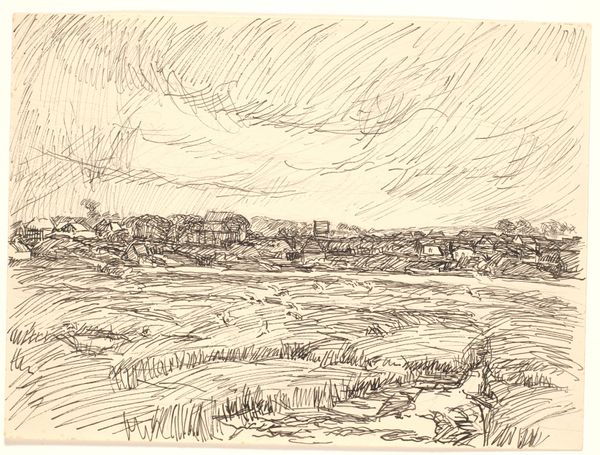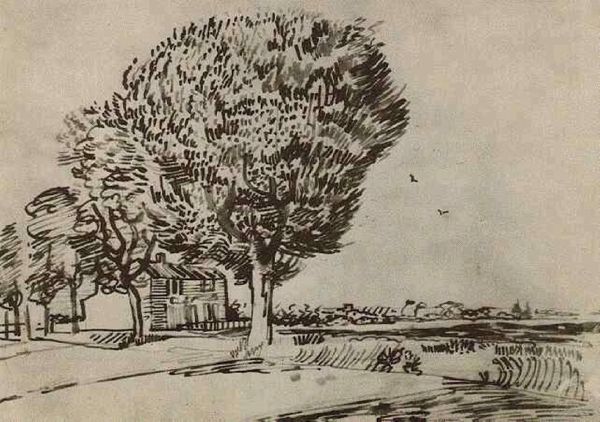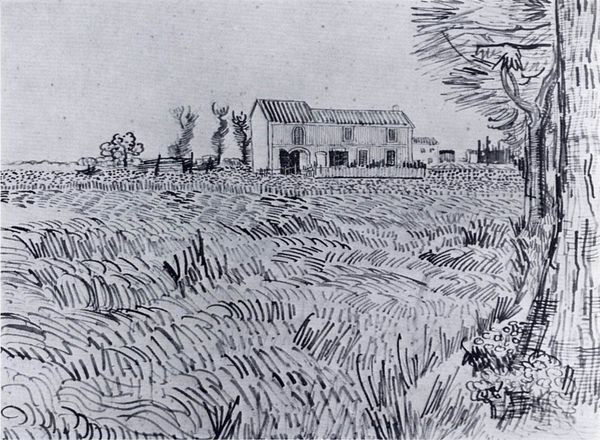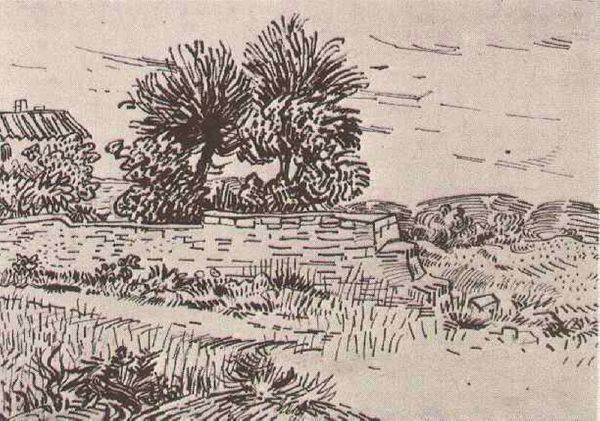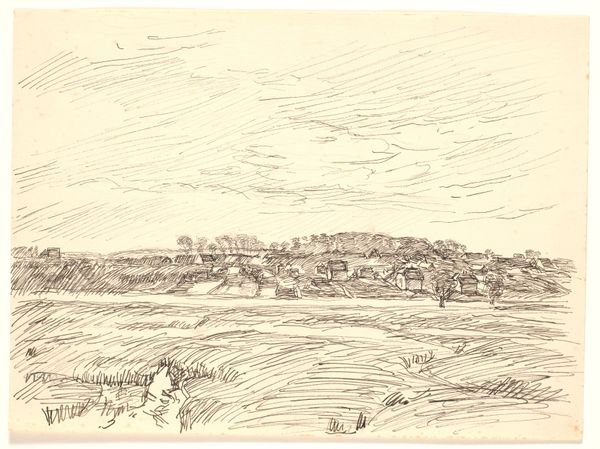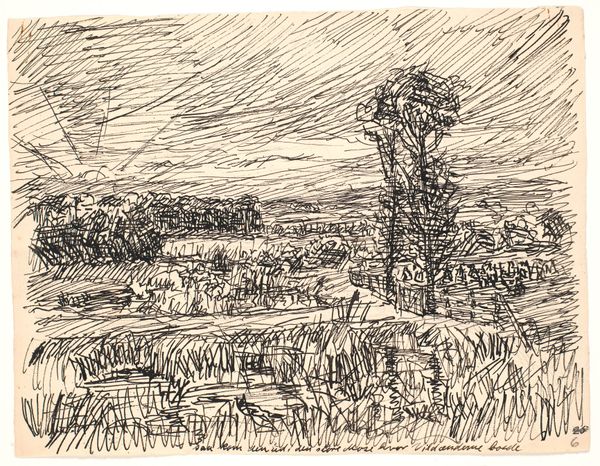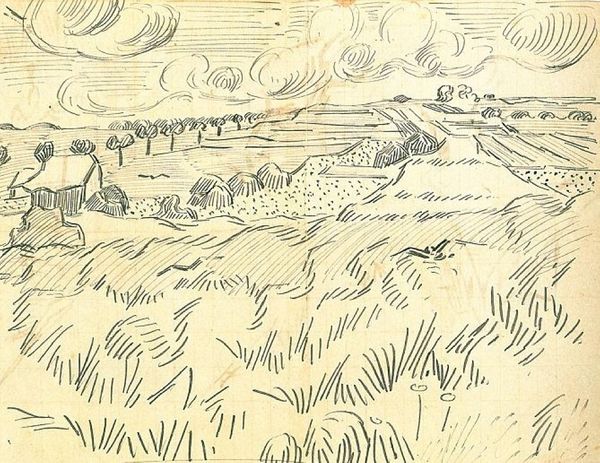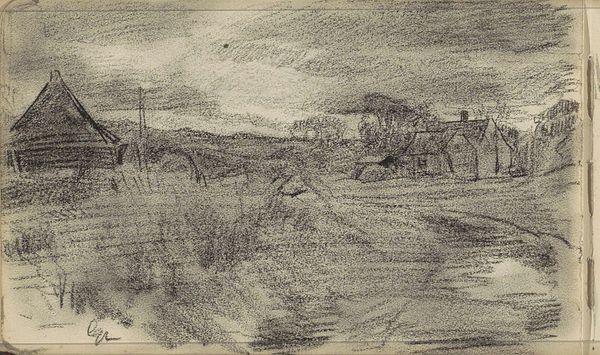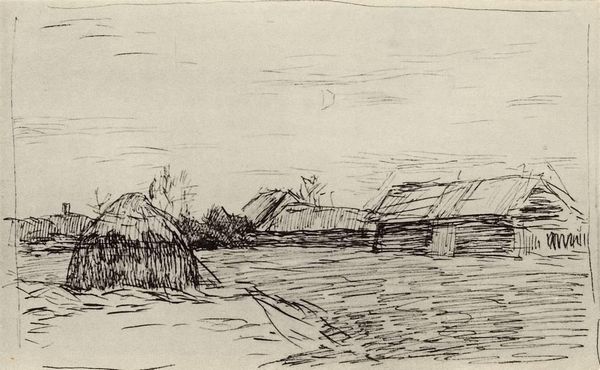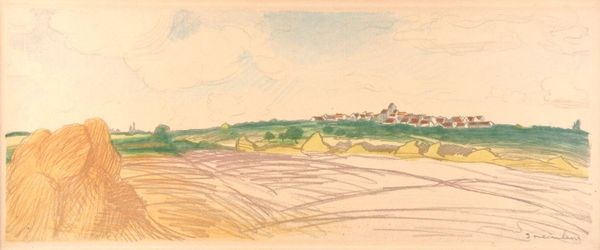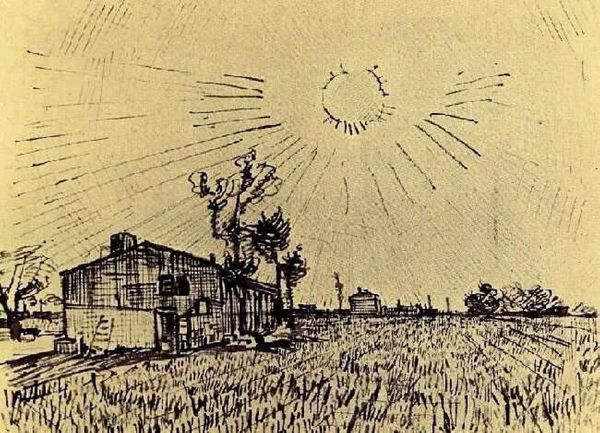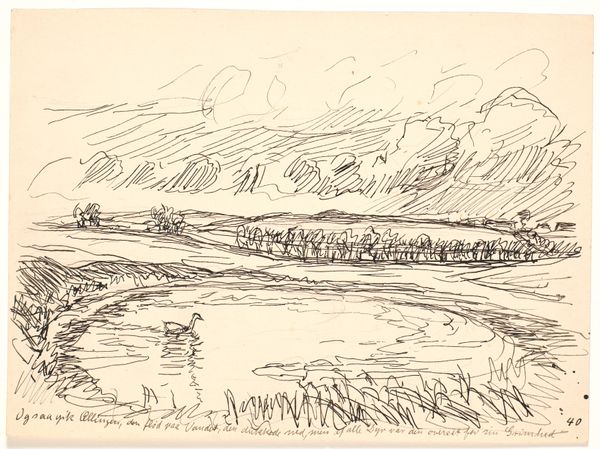
drawing, ink
#
drawing
#
garden
#
impressionism
#
landscape
#
ink
#
line
#
building
Copyright: Public domain
Editor: This is Vincent van Gogh's "La Crau with Peach Trees in Bloom," a landscape drawing from 1888 rendered in ink. I’m struck by the contrast between the delicate, almost whimsical lines of the peach trees and the stark, almost industrial look of the buildings in the background. How does the context of the time influence your interpretation of this drawing? Curator: Well, think about where and when Van Gogh made this. Arles, in the south of France, 1888. He's chasing the light, yes, but also an artistic community. This wasn't just about pretty pictures; it was about forging a new, more authentic vision of modern life. Notice how the landscape isn't just a backdrop. It's actively shaped by human intervention – the fences, the cultivated fields. It’s the public role of art as a commentator on human interaction with the land. Does that shift your perception at all? Editor: It does! The industrial feel now seems less like an accident and more like Van Gogh acknowledging the changing landscape, the march of… well, not necessarily progress, but certainly change. Curator: Exactly! And that’s where the politics of imagery come in. Van Gogh wasn’t shying away from the impact of civilization. He was integrating it into his vision, challenging viewers to consider the relationship between nature and human development, which itself was wrapped in the socio-political dynamics of the late 19th century. Did the art world understand or celebrate those ideas back then? Editor: I suppose that makes this piece more than just a landscape study; it’s a statement about the cultural and industrial encroachment into nature, not too dissimilar from some contemporary social critiques, but done with peach blossoms and ink! Curator: Precisely. Looking closely reminds us of the social lens which both framed and received the artist's own perspective during his lifetime.
Comments
No comments
Be the first to comment and join the conversation on the ultimate creative platform.
